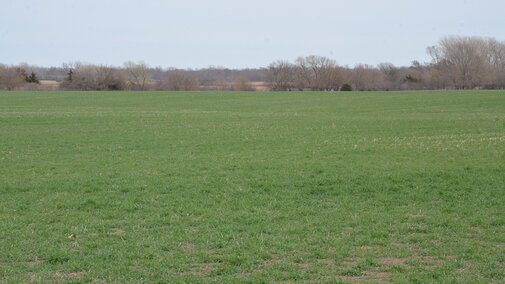The wheat-growing season is off to an early start due to a mild winter. Wheat fields are looking green from a distance (Figure 1), but closer examination reveals freeze damage in some fields caused by periods of subfreezing temperatures that occurred after growth had resumed (Figures 2 and 3).
Currently, disease development has not progressed to noticeable levels; however, if the wet weather forecasted for this spring occurs, diseases are expected to develop to damaging levels. It is recommended that wheat fields be scouted regularly for early disease detection starting now.
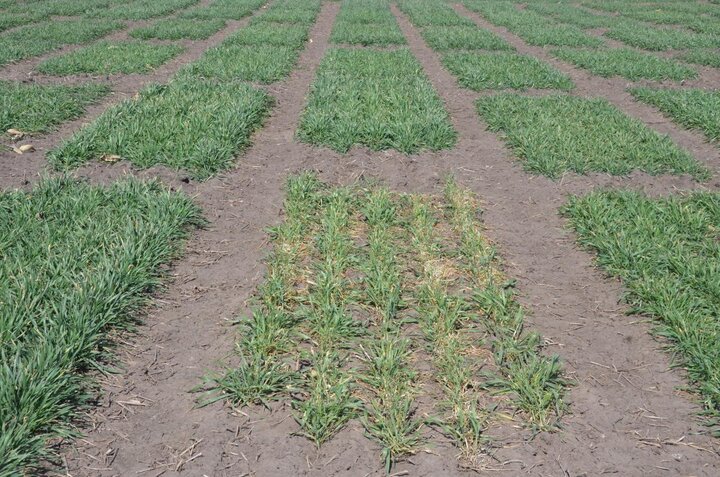
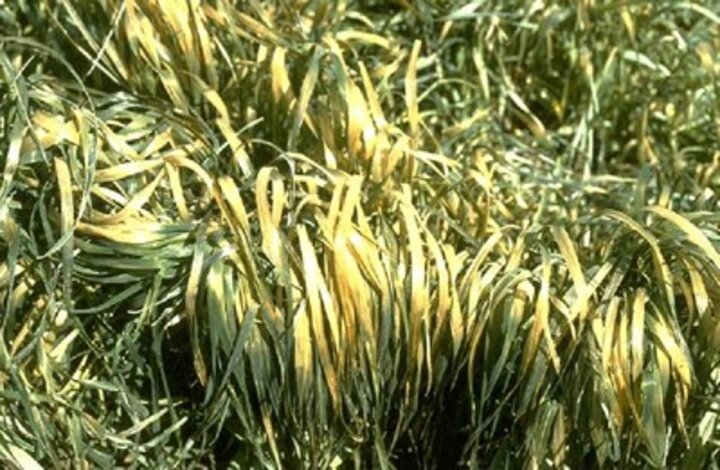
What to Look for When Scouting
Early season diseases in Nebraska wheat fields are stripe rust, fungal leaf spots (tan spot and Septoria leaf blotch), and powdery mildew.
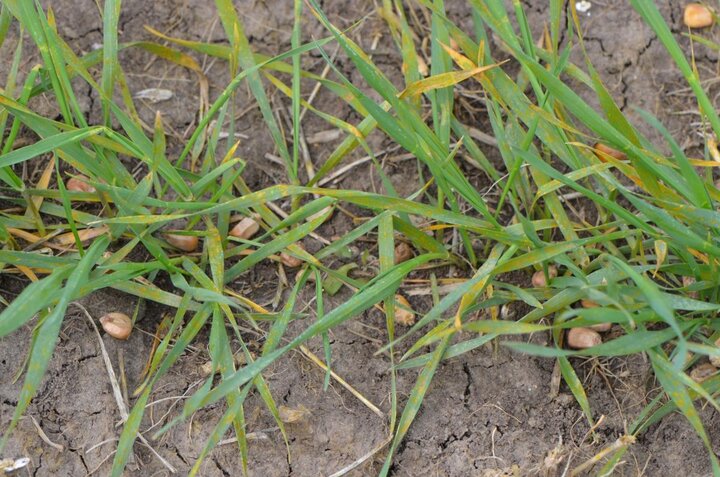
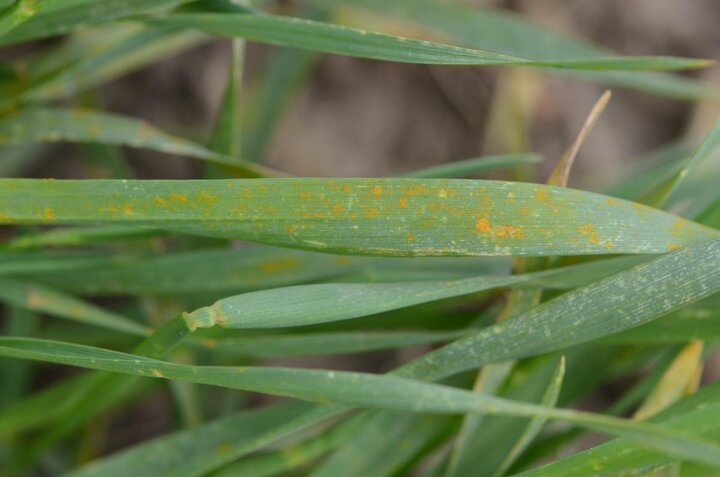
Stripe Rust
Because stripe rust was widespread in the state on fall-planted wheat last fall, start scouting early in the growing season to detect any stripe rust that may have overwintered. Look for yellow rust pustules both in the lower and upper canopy. On young wheat, stripe rust usually does not form stripes (Figures 4 and 5).
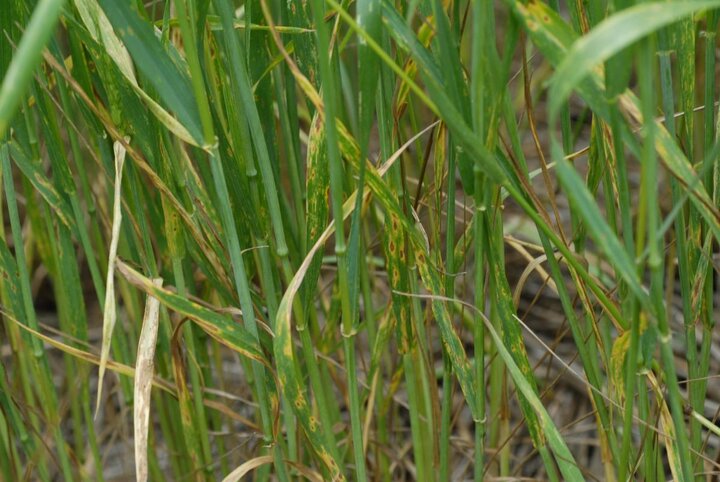
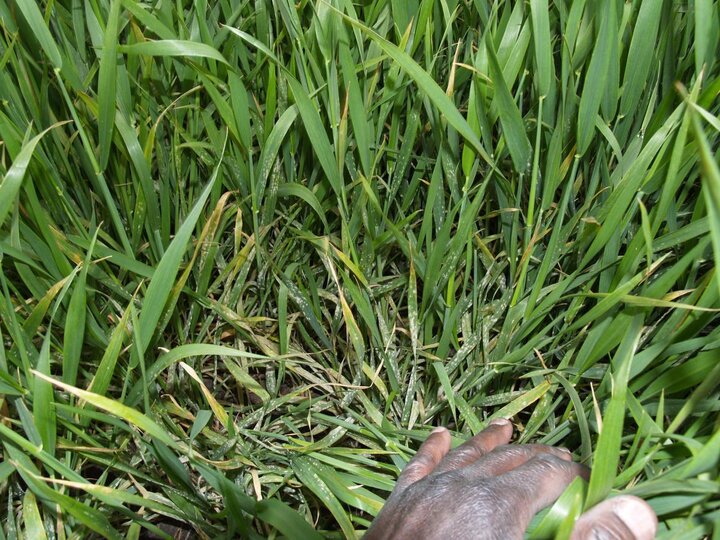
Fungal Leaf Spot Diseases
The most common early season fungal leaf spot diseases in Nebraska wheat are tan spot and Septoria leaf blotch. During the early stages of development, symptoms of these two diseases are not distinguishable. They consist of spots with brown necrotic centers surrounded by yellow halos. These spots start on the lower leaves and progress up the plant (Figure 6). They can enlarge into large dead areas on leaves. Tan spot and Septoria leaf blotch are most severe in fields with wheat residue on the soil surface.
Powdery Mildew
Favored by high humidity, powdery mildew starts on the lower leaves and stems where humidity remains high for prolonged periods. It is characterized by white, cottony patches of mycelium and conidia (asexual spores) on the plant surface. The white patches later turn dull gray-brown. Look in the lower canopy for powdery mildew (Figure 7). Powdery mildew can be plentiful in the lower canopy, but not visible on the top of the wheat crop.
Management
Base the decision to apply a fungicide early in the growing season on the following:
Presence of stripe rust based on scouting. If stripe rust is detected early in the growing season, it is advisable to apply a fungicide to stop it or slow down its development. A wet spring is expected in Nebraska based on this year’s weather forecasts. This raises the risk for development of stripe rust if it is present in a field. Even if you have planted a variety known to be resistant to stripe rust, if the disease is present in the field, a preventive fungicide application will be worthwhile.
Fungal leaf spot diseases and powdery mildew developing to severe levels. If wheat was drilled into wheat stubble and tan spot, Septoria leaf blotch, or powdery mildew are developing to severe levels, an early season fungicide application may be warranted. Under normal weather conditions, these diseases develop slowly enough that a flag leaf fungicide application alone is sufficient to control them effectively.
Accurate identification of the disease present in a field. It is important to positively identify the disease present in a field before deciding whether to apply a fungicide. Virus diseases such as wheat streak mosaic cannot be controlled by applying a fungicide.
Economics: Due to low wheat prices, apply a fungicide only if you have to. Multiple applications in one growing season may not be profitable or economically feasible.
Rust Update from Southern States
Stripe rust and leaf rust have been active in Texas. As of March 22, stripe rust activity was low in Texas due to warmer temperatures; however, leaf rust is developing to severe levels. As of March 15, stripe rust had not been observed in Oklahoma and leaf rust had been observed only at trace levels. There have been no reports of rust diseases in Kansas.
These reports indicate that the amount of rust inoculum blowing into Nebraska this year from southern states may be smaller than in the previous three years. However, due to the forecast of wet weather for this spring, growers should be prepared to manage fungal diseases. It takes only a small amount of inoculum for a disease to develop and spread under favorable weather conditions. Apart from the rusts, inoculum of other diseases is already present in Nebraska wheat fields.
